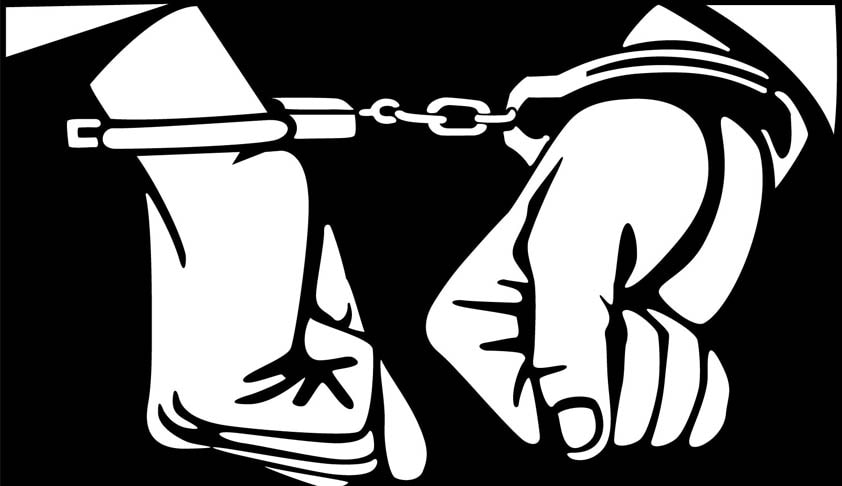Is Sedition Law Anti-Indian?: Legal Analysis
Dr. Sophy K.J
22 Feb 2016 4:53 AM GMT
The current debate on sedition arises from the state intrusion into the cultural event held in one of the epitome of educational institutions of learning in India, Jawaharlal Nehru University, New Delhi. It is also further interesting to note that the charges of sedition was based on a video aired by the Zee news and FIR was filed only on 11th February, 2016, after two days of rally at...
The current debate on sedition arises from the state intrusion into the cultural event held in one of the epitome of educational institutions of learning in India, Jawaharlal Nehru University, New Delhi. It is also further interesting to note that the charges of sedition was based on a video aired by the Zee news and FIR was filed only on 11th February, 2016, after two days of rally at JNU despite police presence during the event on 9th February, 2016. We have come across filing of sedition charges by the state in earlier instances against persons such as Binayak Sen, Arundhati Roy, S.A.P. Geelani, Aseem Trivedi, Uday Kumar (Kudankulam activist), the more recently against Kovan etc. The arrest under the law of sedition challenges ‘the right to dissent’ given under the democratic constitution of the country. The time demands deeper legal analysis of the imperial section on sedition incorporated to Indian Penal Code by Sir James Stephens in 1870 in a particular political condition to control activities of ‘radical’ group of the time, wahabis.
The historical context of the law narrates us that it was enacted with the intention to suppress vibrant political movements against the British Colonial rule. There were other enactments along with Sec. 124-A of IPC such as the Dramatic Performances Act, 1876 and the Vernacular Press Act, 1878 used as weapons of suppression over the oral, written, pictorial, or performance based creative expressions. It is very easy to understand the reason why an imperialist had to do that during their rule whereas it is hard to digest why the state has to keep this offence under the head of ‘offences against the state’ (serious offences) curtailing their right to speech, especially in occurrences like there is no ulterior ‘effect’ of such expression on the society. The irony of the fact that originators of this law in India- UK has abolished it in 2009 based on Britain’s Law Commission’s Report in 1977. Claire Ward, British Parliamentary under Secretary of State at the Justice Ministry stated that “the abolition is to uphold free speech and challenge such laws existing in other countries”.
The law on sedition was severely criticised by the freedom fighters, constitution makers, historians, intellectuals and social activists as it gives room for misuse by the Government itself to take on their political vendetta. Mahatma Gandhi slammed the section by describing it as “prince among the political sections of the Indian Penal Code designed to suppress the liberty of the citizen”. The constitution drafters, including Sardar Bhopinder Singh Mann and Prof. Yashwant Rai explicitly criticised the addition of word ‘sedition’ under the Constitution during the debate on 2nd December, 1948 pointing out the intent of the sedition law under the IPC to suppress Indians and its limitation on freedom of speech and expression. Jawaharlal Nehru in Parliament in 1951 described the section as “obnoxious and highly objectionable one in body of law” and advised to get rid of it sooner. Many historians and intellectuals including Romila Thapar, Irfan Habib, Aditya and Mridula Mukherjee, KN Pannikar, Prabhat Patnaik, Zoya Hasan, P. Sainath has expressed abuse of the archaic law damaging the democratic fabric of the constitution.
Judiciary and the law of sedition
The first prosecution under Sec. 124-A was in the case of Jogendra Chandra Bose in 1891. The case was filed against him for criticising Age of Consent Bill and criticising the government for their repressive policies over Indian religious sentiments. The ground of inciting religious sentiments was charged against him. However, the proceedings were dropped since he tendered an apology.
Amongst the pre-independence cases, the prominent amongst them are the cases of Bal Gangadhar Tilak and M.K. Gandhi. Tilak’s sedition trial laid down important jurisprudence in this area, titled as ‘Strachey’s law’ since Justice Strachey, popular among the anti-native judges, laid down the interpretation of ‘disaffection’ to include hatred, enmity, dislike, hostility, contempt and every form of ill will to the government. Further it also included disloyalty and held that the explanation clause that talks about acts of disapprobation would not apply to “any writing which consists not merely of comments upon government measures, but of attacks upon the government itself, its existence, it’s essential characteristics, its motives, or its feelings towards people”. The sedition law was amended in 1898 to include strachey’s law which was condemned by Indians. Under the same law, Tilak was charged in 1908 in which he was given 6 years rigorous imprisonment and in 1916 though he was charged M.A. Jinnah skilfully saved him from the conviction. M.K. Gandhi was charged for sedition in 1922 for the articles published in Young India. He strongly commented on the law and said that “if one has no affection for a person, one should be free to give the fullest expression to his disaffection, so long as he does not contemplate, promote or incite violence”. Though Judge Strangman acknowledged Gandhi’s comments, sentenced him for 6 years imprisonment.
During Constituent Assembly debates the word ‘sedition’ was removed from Art. 19 (2) of the Constitution. The word ‘public order’ was added to the same through the First Amendment in 1951. Nehru had to initiate the amendment proceedings on the background of decisions of Supreme Court in Romesh Thapar’s and Brij Bhushan’s case. The view that mere danger to public order and safety would not suffice to ban a publication according to the Constitutional provision and it requires to prove danger to the security of state. Post- these cases, Nehru Government amended Art. 19 (2) to insert ‘public order’. During the Amendment Proceedings, Nehru made it clear that First Amendment would never validate the existing law like sedition in the statute book. However, it remained in the statute book and used by the Governments against Human Right Activists, political rebels, artists etc.
The Constitutionality of the Section was challenged in the case, Ram Nandan vs. State, wherein the Allahabad High Court held that Sec. 124-A as unconstitutional. The court stated that “mere criticism of the government without any tendency to create public disorder has caught within the mischief of Sec. 124-A, then that section would be invalidated” as it restrict freedom of speech and expression. This decision was overruled in Kedar Nath Singh vs. State of Bihar, wherein the Constitution Bench of the Court held the Section 124-A constitutional. The Court held that
“any acts within the meaning of s. 124A which have the effect of subverting the Government by bringing that Government into contempt or hatred, or creating disaffection against it, would be within the penal statute because the feeling of disloyalty to the Government established by law or enmity to it imports the idea of tendency to public disorder by the use of actual violence or incitement to violence.”
These words clearly indicates that like in colonial decisions the test for sedition is not subjective test, but an objective test in the manner that the words spoken must have the tendency to create public disorder by the use of actual violence or incitement to violence. Therefore not only that the words should create the feelings of disloyalty, but also it should lead to the disruption of the state. So the court has used the test of proximate connection between the speech and its effect. It makes us to understand that mere speech does not call for application of the section unless there is actual harm or violence or incitement to violence.
This test of proximate nexus was even borrowed in Balwant Singh vs. State of Punjab, wherein the Court held that “advocating revolution, or advocating even violent overthrow of the state, does not amount to sedition, unless there is incitement to violence, and more importantly, the incitement is to ‘imminent’ violence”. In Arup Bhuyan vs. State of Assam the Supreme Court agreed with US Court decision in Brandenburg vs. State of Ohio, to state that “mere membership of a banned organisation will not incriminate a person unless he resorts to violence or incites people to violence or does an act intended to violence”.
Conclusion
Though the political transition has taken place from Imperialism to democracy in India under its Constitution, unfortunately the tyrannical law still alive in the justice system. The state has since post-independence has used this section despite wide criticism even from the higher judiciary. Even the current case of sedition charged on Kanhaiya Kumar would not exist according to the interpretation laid down in Kedar Nath case and followed in Balwant Singh. The proximate nexus test between the speech and consequence would fail since the rally was on 9th February, 2016 and there was no incitement to violence or violence following the alleged sloganeering. If this law needs to exist in statute book on the ground of protection of stability of the nation, guidelines should be issued to the governments about jurisprudential parameters of the law of sedition. Otherwise, the literal interpretation of section-124A would be despotic and violation of constitutional scheme that ensures right to dissent and democratic fabric of the country.
Dr. Sophy K.J., Assistant Professor of Law, National Law University, Delhi. Her areas of interests include Economic, Socio-cultural Rights, Globalisation and Human Rights, Historical Development of Law.
The views expressed in this Article is purely personal.



